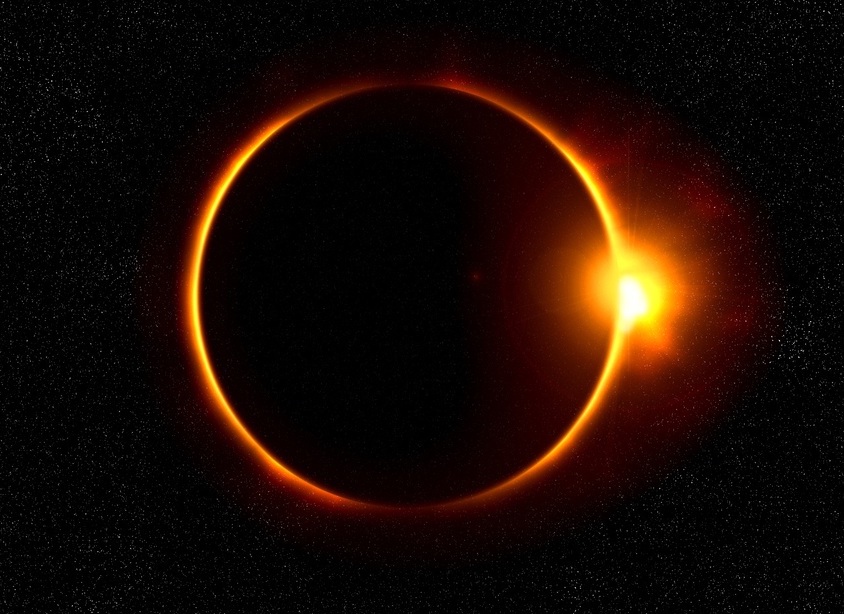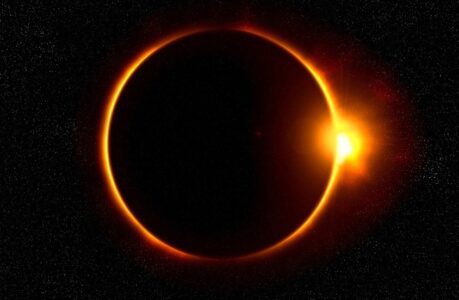The Sun, our closest star, is a magnificent celestial object that has captured the curiosity of humanity for millennia. Its fiery beauty and the intricate dance of sunspots across its surface have fascinated astronomers and stargazers alike. While observing the Sun can be a rewarding experience, it’s important to do so safely to protect your eyes and vision. This article will guide you through how to safely observe the Sun, even during a solar eclipse.
1. Understanding the Sun
Before diving into the techniques and precautions of safe solar observation, it’s essential to understand the nature of the Sun. The Sun is a seething ball of hot, glowing gas primarily composed of hydrogen and helium. It emits intense visible light, as well as various forms of invisible radiation, such as ultraviolet (UV) and X-rays.
The Sun’s intense brightness can cause significant damage to your eyes if observed directly without protection. Therefore, it’s crucial to take the necessary precautions to prevent eye injuries when observing the Sun.
2. Solar Filters: Your Best Friend
One of the safest and most effective ways to observe the Sun is by using solar filters. These specially designed filters can be attached to telescopes, binoculars, or cameras to block out harmful levels of sunlight while allowing you to view the Sun’s features in detail.
There are different types of solar filters available, including:
a. Solar Viewing Glasses
Solar viewing glasses are inexpensive and readily available during solar events like eclipses. They are made of special materials that block out harmful solar radiation while allowing you to see the Sun. Ensure your solar viewing glasses are ISO-certified for safe solar observation.
b. Solar Filters for Telescopes
If you have a telescope, invest in a high-quality solar filter that fits securely over the telescope’s aperture. These filters are designed to withstand the Sun’s intense heat and provide a clear view of sunspots, solar flares, and other solar phenomena.
c. Solar Filters for Cameras
Photographers interested in capturing solar events can use specialized solar filters for their cameras. These filters fit over the camera lens and provide a safe way to photograph the Sun without damaging your equipment.
3. The Power of Projection
Another safe method for observing the Sun is through projection. This technique involves projecting an image of the Sun onto a screen or surface, allowing multiple people to view it simultaneously. Here’s how you can create a simple solar projector:
- Pinhole Projection: Punch a small hole in a piece of cardboard and allow sunlight to pass through it, projecting an image of the Sun onto another surface, like a sheet of white paper. This method is safe and accessible.
- Telescope Projection: If you have a telescope, you can safely project an image of the Sun onto a screen using your telescope’s eyepiece. Be sure to use a solar filter on the telescope’s objective to avoid damage.
4. Safe Times for Solar Observation
Not all times of the day are suitable for observing the Sun safely. The Sun’s intensity varies throughout the day, and it’s essential to choose the right time for your observations. The best times for solar observation are:
a. Morning and Evening
During sunrise and sunset, when the Sun is low on the horizon, its light passes through a thicker layer of Earth’s atmosphere. This scattering of light reduces the Sun’s intensity, making it safer to observe without special filters.
b. When the Sun is High
Avoid observing the Sun when it’s directly overhead during midday. The Sun’s rays are most intense at this time, making it extremely hazardous to observe without proper protection.
5. Solar Eclipses: A Spectacular Event
Solar eclipses are awe-inspiring celestial events during which the Moon passes between the Earth and the Sun, casting a shadow on our planet. While observing a solar eclipse is a unique and unforgettable experience, it also requires specific precautions.
a. The Path of Totality
If you’re fortunate enough to be in the path of totality during a solar eclipse, you’ll witness the Sun’s corona, a breathtaking halo of plasma surrounding the obscured Sun. However, even during totality, it’s essential to use eye protection for the moments before and after the total eclipse.
b. Eclipse Glasses
When observing a solar eclipse, never look at the Sun without proper eye protection. Eclipse glasses are specially designed to block out the Sun’s harmful rays, allowing you to view the eclipse safely. Make sure your eclipse glasses are ISO-certified and in good condition.
c. Telescopes and Binoculars
If you plan to use telescopes or binoculars to observe a solar eclipse, always use solar filters on the front end (objective) of the optical device. Never look at the Sun through these devices without appropriate solar filters in place.
6. Solar Telescopes: A Closer Look
For serious solar enthusiasts, investing in a dedicated solar telescope can provide an unparalleled view of the Sun’s surface features. Solar telescopes are designed with specialized filters and optics to provide high-resolution images of the Sun.
When using a solar telescope, ensure that you follow these guidelines:
a. Proper Setup
Follow the manufacturer’s instructions for setting up your solar telescope. Ensure that all filters are securely in place, and the telescope is correctly aligned.
b. Regular Maintenance
Inspect your solar telescope regularly to ensure that filters and optics are clean and free from damage. Damaged filters or lenses can result in unsafe observations.
c. Share the Experience
If you have a solar telescope, consider sharing the experience with friends and family, but always provide proper guidance and supervision to ensure everyone’s safety.
7. Solar Observation Etiquette
When engaging in solar observation, it’s essential to be mindful of etiquette and safety considerations, especially if you’re observing the Sun in a public setting or with a group of people. Here are some tips:
a. Share Your Knowledge
If you’re experienced in solar observation, take the opportunity to educate others about the Sun, its features, and the importance of safe observation techniques.
b. Supervise Children
Children are naturally curious, so if they’re interested in solar observation, make sure they understand the importance of using proper eye protection and safe techniques. Supervise their activities closely.
c. Respect Local Regulations
In some areas, local regulations may govern solar observation, especially during solar events like eclipses. Be aware of any restrictions and follow them accordingly.
d. Leave No Trace
When setting up your observation equipment, be respectful of the environment. Clean up after yourself, and avoid disturbing the natural surroundings.
Safely Observe the Sun
Observing the Sun can be a thrilling and educational experience, but it comes with inherent risks. Whether you’re observing the Sun during daily observations or witnessing a solar eclipse, always prioritize safety. Use proper eye protection, follow established guidelines, and share your knowledge with others to ensure a memorable and risk-free solar observing experience. With the right precautions, you can unlock the mysteries of our closest star while preserving your vision for future observations.

